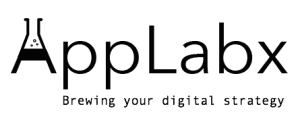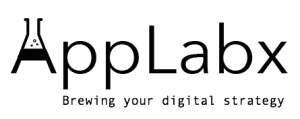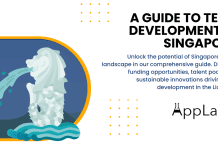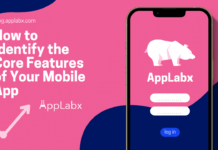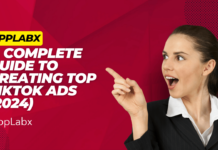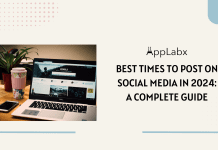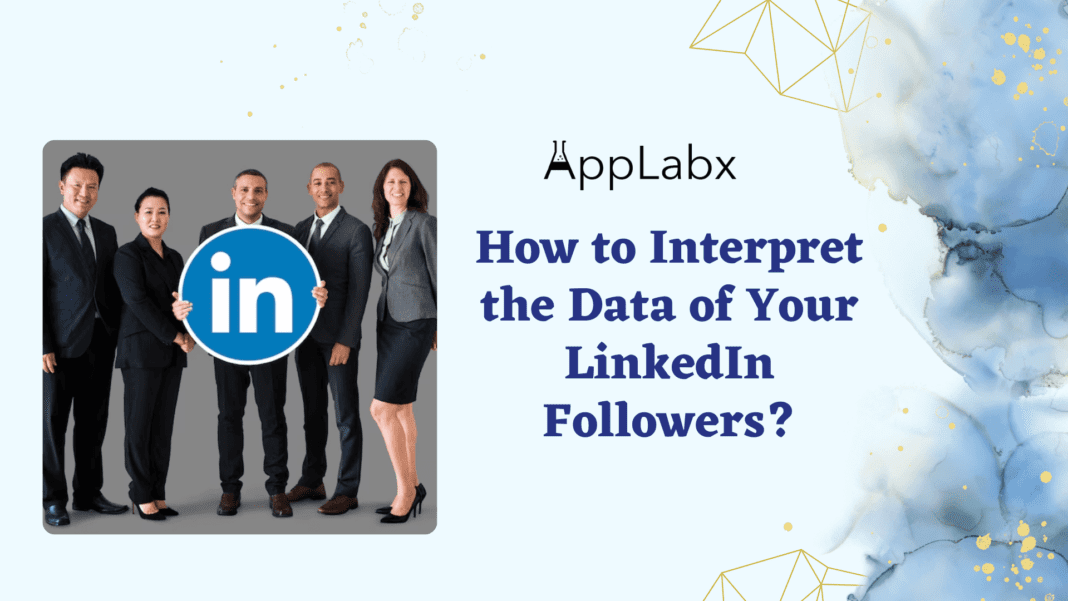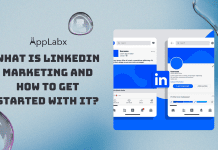Key Takeaways
- Strategic Content Tailoring: Understand audience preferences through follower data to tailor content effectively, maximizing engagement and resonance.
- Dynamic Networking Insights: Utilize follower growth analysis for strategic networking, adapting engagement initiatives to foster meaningful connections and industry presence.
- Informed Decision-Making: Harness the power of data-driven insights to make informed decisions, refining your LinkedIn strategy iteratively for sustained professional growth.
In the dynamic realm of professional networking, LinkedIn stands out as a powerhouse platform, fostering connections, collaborations, and opportunities in the digital landscape.
As professionals and businesses strive to maximize their presence on this platform, the ability to decipher the nuanced metrics encapsulated in the data of your LinkedIn followers becomes paramount.
This blog will serve as your comprehensive guide, navigating the intricate web of analytics and unveiling the secrets hidden within the numerical tapestry of your follower base.

The Crucial Role of Data Interpretation
In the ever-evolving digital ecosystem, mere presence on LinkedIn is no longer sufficient.
To truly harness the potential of this professional hub, one must delve deep into the analytics that LinkedIn generously provides.
Understanding the data of your LinkedIn followers is not just about numbers; it’s about extracting actionable insights that can propel your networking endeavors to new heights.
Unveiling the LinkedIn Analytics Dashboard
Embarking on this data interpretation journey starts with a proficient navigation of the LinkedIn Analytics dashboard.
This expansive dashboard is replete with metrics that go beyond the surface-level, offering a nuanced perspective into the behavior, preferences, and demographics of your audience.
From here, we’ll decipher the intricacies of each key metric, empowering you to make informed decisions that resonate with your followers.
The Demographic Tapestry
Your followers on LinkedIn are not a homogeneous group; they are a diverse tapestry of professionals with unique characteristics. Unraveling the demographic insights embedded in your follower data allows you to tailor your content with precision.
We will explore how to discern the industries, job roles, locations, and other vital demographic facets of your audience, enabling you to create content that resonates on a personal level.
Engagement Metrics: The Pulse of Interaction
Beyond the static numbers, LinkedIn provides a dynamic array of engagement metrics – likes, comments, shares – reflecting the pulse of interaction within your network. Understanding these metrics is akin to deciphering a language spoken by your followers.
Together, we’ll unravel the mysteries behind spikes in engagement, identify content that sparks conversations, and uncover the elusive factors that transform a casual scroll into active participation in your professional narrative.
Tracking Follower Growth: A Strategic Imperative
The growth trajectory of your LinkedIn followers is not just a numerical statistic; it’s a narrative of your influence and reach on the platform. We’ll delve into the art of tracking follower growth over time, identifying patterns, and implementing strategies to fuel a steady ascent.
The aim is not just to accumulate numbers but to foster a community that resonates with your brand or professional identity.
Content Performance Evaluation: Crafting a Compelling Story
Every post on LinkedIn is a chapter in your professional story.
Evaluating the performance of these chapters requires a keen eye for analytics.
We’ll explore the metrics that unveil the impact of your content – from the click-through rates to the time spent on your posts.
Armed with this knowledge, you’ll be equipped to refine your storytelling technique, ensuring that each piece of content contributes meaningfully to your overarching professional narrative.
The Network Influence: Identifying Key Players
LinkedIn is not just about the quantity of connections; it’s about the quality of your network. We’ll uncover how to identify influential followers and connections within your LinkedIn orbit.
These key players can be catalysts for opportunities, collaborations, or industry insights. Nurturing relationships with them based on data-driven insights is a strategic move that can elevate your LinkedIn experience.
Benchmarking Against Competitors: A Strategic Edge
In the competitive landscape of professional networking, benchmarking against industry competitors is not just a curiosity; it’s a strategic imperative.
We’ll explore how to compare your follower data with competitors, gleaning insights that can inform your strategy and give you a competitive edge. The goal is not just to keep up but to strategically position yourself for success in your professional domain.
Harnessing LinkedIn Analytics Tools: Beyond the Basics
While LinkedIn provides a robust analytics dashboard, the quest for insights can be elevated with the use of third-party tools. We’ll provide an overview of these tools, guiding you in selecting the right ones for your specific needs.
From advanced analytics to content scheduling, these tools can augment your data interpretation efforts, ensuring a holistic approach to LinkedIn optimization.
Actionable Strategies for Improvement: Bridging Insights and Implementation
Data interpretation is not an end in itself but a means to an end – the end being a more impactful and strategic presence on LinkedIn.
We’ll bridge the gap between insights and implementation, offering actionable strategies to optimize your content, engagement, and overall LinkedIn strategy.
This section is the crux of the guide, providing a roadmap for immediate improvements based on the data insights uncovered.
Embark on this data-driven journey with us, as we unravel the intricacies of your LinkedIn follower data and empower you to optimize your presence on this premier professional platform.
Let’s transform numbers into narratives and data into strategies, shaping a LinkedIn presence that speaks volumes in the digital professional landscape.
But, before we venture further, we like to share who we are and what we do.
About AppLabx
From developing a solid marketing plan to creating compelling content, optimizing for search engines, leveraging social media, and utilizing paid advertising, AppLabx offers a comprehensive suite of digital marketing services designed to drive growth and profitability for your business.
AppLabx is well known for helping companies and startups use social LinkedIn marketing to drive web traffic to their websites and web apps.
At AppLabx, we understand that no two businesses are alike. That’s why we take a personalized approach to every project, working closely with our clients to understand their unique needs and goals, and developing customized strategies to help them achieve success.
If you need a digital consultation, then send in an inquiry here.
How to Interpret the Data of Your LinkedIn Followers?
- Accessing LinkedIn Analytics
- Demographic Insights
- Engagement Metrics
- Follower Growth Analysis
- Content Performance Evaluation
- Network Influence
- Benchmarking Against Competitors
- Utilizing LinkedIn Analytics Tools
1. Accessing LinkedIn Analytics
In the vast landscape of LinkedIn, accessing the Analytics dashboard is akin to obtaining a treasure map, guiding you to the riches of data that can transform your professional journey.
Let’s embark on a comprehensive exploration, navigating the nuances of LinkedIn Analytics and unveiling the wealth of information it holds.
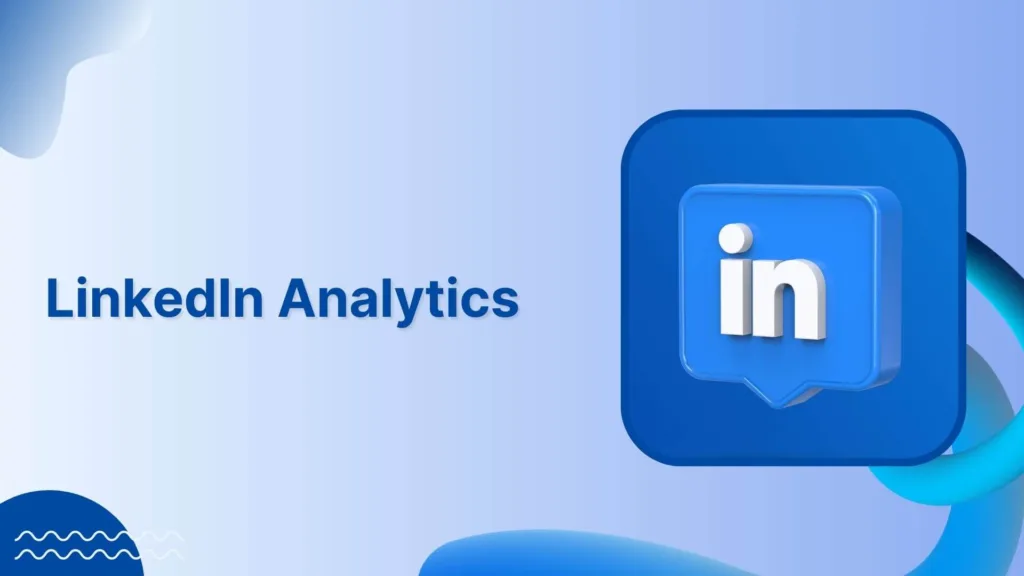
Navigating to the LinkedIn Analytics Dashboard
- LinkedIn Analytics is accessible to all users with a LinkedIn Page, providing a centralized hub for tracking performance metrics. To access it:
- Log in to your LinkedIn account and navigate to the “Me” dropdown menu.
- Select “Company Page” under the “Manage” section.
- Click on “Analytics” to open the Analytics dashboard.
- Example: LinkedIn boasts 1 billion users worldwide, making it a powerhouse for professional networking. This vast user base contributes to the significance of leveraging LinkedIn Analytics for strategic insights.

Overview of Key Metrics
- The Analytics dashboard encompasses an array of key metrics offering a holistic view of your LinkedIn performance. Some pivotal metrics include:
- Visitor Highlights: Tracking the number of profile views, clicks, and followers gained over specific periods.
- Updates: Analyzing engagement metrics such as likes, comments, and shares for individual posts.
- Example: LinkedIn posts with images have a 98% higher comment rate, on average, reinforcing the importance of tracking engagement metrics to refine content strategy.
Audience Insights: A Deep Dive into Demographics
- Understanding the demographics of your LinkedIn followers is a cornerstone of effective data interpretation.
- Follower Demographics: Gain insights into the industries, job functions, seniority, and locations of your followers.
- Visitor Demographics: Analyze the demographics of visitors to your LinkedIn page.
- Example: If your target audience is primarily in the technology sector, the ability to identify and analyze the concentration of followers in this industry allows for tailored content creation that resonates with your core audience.

Follower Growth Analysis: Charting Your Influence
- Tracking the growth of your LinkedIn followers over time provides a narrative of your expanding influence.
- Follower Growth: Understand the factors contributing to spikes or dips in follower numbers.
- Demographic Changes: Identify if there are shifts in the demographics of your follower base.
- Example: A steady increase in followers over a specific period may correlate with successful content strategies, while sudden drops might signal a need for reassessment.
Content Performance Evaluation: Crafting Compelling Narratives
- Your content on LinkedIn is not just information; it’s a story. Evaluating its performance is crucial for refining your storytelling approach.
- Top Performing Content: Identify posts with the highest engagement and understand the elements contributing to their success.
- Post Timing: Analyze when your audience is most active to optimize post-scheduling.
- Example: The average best time to post on LinkedIn is between 10 AM to 12 PM on Tuesday, Wednesday, and Thursday. Such insights empower you to align your posting schedule with peak activity times.
Network Influence: Identifying Key Players
- Beyond numbers, LinkedIn is about quality connections. Identifying influential followers and connections is pivotal.
- Top Engagers: Recognize followers who consistently engage with your content.
- Influential Connections: Identify and nurture relationships with key industry players in your network.
- Example: Connecting with influencers in your industry can amplify your content’s reach. Analytics help pinpoint these influential connections for strategic networking.
2. Demographic Insights
Understanding the demographics of your LinkedIn followers is akin to holding the key to a tailored engagement strategy.
In this extensive exploration, we’ll delve into the intricacies of demographic insights, unveiling the wealth of information that lies beneath the surface and demonstrating how these insights can shape your content and connection strategies.
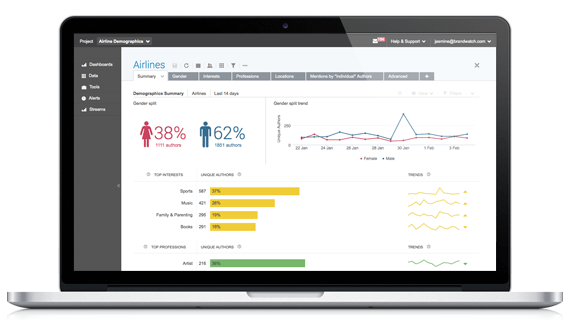
Unveiling Follower Demographics
- The Follower Demographics section in LinkedIn Analytics provides a snapshot of the industries, job functions, seniority levels, and locations of your followers.
- Industry Insights: Identify the dominant industries among your followers.
- Job Function Breakdown: Understand the distribution of job roles within your follower base.
- Example: If your LinkedIn audience predominantly comprises professionals in the technology sector, tailoring your content to address industry-specific challenges, trends, and innovations can significantly enhance engagement.

Leveraging Job Seniority Insights
- Understanding the seniority levels of your followers provides a nuanced perspective on their professional journeys.
- Seniority Distribution: Analyze the distribution of followers across entry-level, mid-level, and senior roles.
- Tailoring Content to Seniority: Craft content that resonates with the career stage of your primary audience.
- Example: If a substantial portion of your followers occupies entry-level positions, focusing on content related to skill development, career advice, and industry trends relevant to early-career professionals can foster meaningful engagement.

Geographical Breakdown: Navigating Locations
- The geographical distribution of your followers unveils opportunities for localized engagement and networking.
- Location Analytics: Identify the regions or countries with the highest concentration of followers.
- Localized Content: Tailor content to address regional trends, events, or industry developments.
- Example: A company with a global presence might discover a significant follower base in a specific region. Crafting content that acknowledges regional nuances, such as cultural events or industry regulations, can deepen engagement in those areas.

Industry Trends and Insights
- Beyond your specific follower base, LinkedIn provides broader insights into industry trends that can inform your content strategy.
- Industry Benchmarking: Compare your follower demographics with broader industry trends.
- Adapting to Industry Shifts: Align your content with emerging trends in the industries relevant to your audience.
- Example: If your follower base is indicative of this shift, creating content around remote work strategies and professional development in virtual environments can resonate strongly.

Customizing Content for Job Functions
- Tailoring content to the specific job functions within your audience enhances relevance and engagement.
- Job Function-Specific Insights: Understand which job functions are most prevalent among your followers.
- Creating Niche Content: Craft content that speaks directly to the challenges and interests of different job functions.
- Example: If your followers include a significant number of marketing professionals, producing content that delves into the latest marketing trends, tools, and strategies can position you as a thought leader in their field.
Data-Driven Decision Making
- Leveraging demographic insights for data-driven decision-making is essential for strategic growth on LinkedIn.
- Identifying Growth Opportunities: Spotting underrepresented demographics can guide targeted outreach efforts.
- Optimizing Sponsored Content: Tailor sponsored content to align with the demographics of your most engaged followers.
- Example: If analytics reveal an underserved demographic in your follower base, such as a lack of engagement from mid-level managers, adjusting your content strategy to address their specific needs can bridge the gap and enhance overall engagement.
3. Engagement Metrics
In the dynamic landscape of professional networking, understanding and leveraging engagement metrics is the key to unravelling the impact of your LinkedIn presence.
This extensive exploration delves into the nuances of engagement metrics, guiding you through the intricacies of likes, comments, shares, and click-through rates. Let’s embark on this journey to decode the language of interaction and transform raw data into actionable insights.

Deciphering Likes, Comments, and Shares
- Likes: The Currency of Acknowledgment
- The number of likes on a post serves as a tangible indicator of approval and acknowledgement.
- A high number of likes suggests that your content resonates with your audience.
- Comments: A Window into Conversations
- Comments provide a qualitative dimension, offering insights into the thoughts, questions, and discussions sparked by your content.
- Engaging with comments fosters community building and positions you as an active participant in relevant conversations.
- Shares: Amplifying Your Reach
- Shares indicate that your content has resonated to the extent that your audience is willing to broadcast it to their networks.
- High share counts amplify your content’s reach, potentially attracting a broader audience.
- Example: Crafting visually appealing content can thus boost engagement by encouraging audience interaction.

Click-Through Rates (CTR): Navigating User Action
- CTR measures the effectiveness of links shared in your posts, offering insights into user actions beyond mere interaction.
- A high CTR indicates that your audience is not only engaging with your content but also taking the next step by clicking on embedded links.
- Tracking CTR is vital for evaluating the success of call-to-action (CTA) elements in your posts.
- Example: Posts with links tend to see 45% higher engagement than those without. Monitoring CTR allows you to assess the performance of your linked content and refine your linking strategy accordingly.
Identifying Content Patterns and Trends
- Analyzing engagement metrics over time unveils patterns and trends that can inform your content strategy.
- Peak Engagement Times: Identify when your audience is most active to optimize post-scheduling.
- Top-performing Content Types: Recognize patterns in the types of content (e.g., articles, videos) that consistently garner high engagement.
- Example: Adapting your posting schedule to align with peak activity times maximizes the impact of your content.

Utilizing Analytics for Post-Optimization
- Engagement metrics serve as a feedback loop, guiding you to refine and optimize your content strategy.
- Identifying High-Performing Content: Pinpoint posts with the highest engagement and analyze the elements contributing to their success.
- A/B Testing Strategies: Experiment with variations in content types, formats, and posting times to discern optimal combinations.
- Example: By consistently monitoring engagement metrics, you may discover that posts featuring personal anecdotes receive higher engagement. Incorporating this insight into your content strategy can foster a more authentic connection with your audience.
Evaluating the Impact of Hashtags and Keywords
- Strategic use of hashtags and keywords can significantly impact engagement metrics on LinkedIn.
- Hashtags: Posts with relevant hashtags can experience increased visibility and engagement.
- Keywords: Incorporating keywords aligned with your industry or niche enhances the discoverability of your content.
- Example: Incorporating industry-specific hashtags can therefore boost the discoverability and engagement of your content.
Interactive Content Strategies
- Engaging formats, such as polls, quizzes, and interactive content, can elevate your engagement metrics.
- Polls: Encourage audience participation by posing questions and inviting responses.
- Interactive Posts: Utilize features like LinkedIn Live or document uploads to diversify your content and enhance engagement.
- Example: Interactive content receives higher engagement rates, as users are drawn to participate. Incorporating polls or interactive elements in your content strategy can foster a more dynamic connection with your audience.
Monitoring Trending Topics and Industry Conversations
- Staying abreast of trending topics and industry conversations enables you to create timely and relevant content.
- Industry Hashtags: Follow and engage with industry-specific hashtags to align your content with ongoing discussions.
- Trending Topics: Leverage trending topics to inject your insights into broader conversations.
- Example: Engaging with trending topics can amplify the visibility of your content.
4. Follower Growth Analysis
Understanding the trajectory of your LinkedIn follower growth is akin to having a compass that guides your professional journey.
In this extensive exploration, we’ll delve into the intricacies of Follower Growth Analysis on LinkedIn, unravelling the factors that contribute to the expansion and providing actionable strategies to enhance your influence within the platform.

Interpreting Follower Growth Trends
- Monitoring Periodic Growth: Regularly track the number of followers gained over specific time intervals.
- Understand the factors contributing to spikes or dips in follower growth.
- Identify the correlation between content strategy changes and follower response.
- Example: If, over the past six months, your follower count has steadily increased, it may indicate that your content strategy, engagement efforts, or networking initiatives are resonating positively with your target audience.
Analyzing Demographic Changes within Followers
- Demographic Shifts: Explore whether there are notable changes in the demographics of your follower base.
- Identify if there are new industries, job roles, or locations showing increased interest in your profile.
- Assess the impact of strategic initiatives on attracting followers from specific demographics.
- Example: If you notice a sudden surge in followers from a particular industry after sharing content relevant to that sector, it signals the effectiveness of tailoring your content to specific audience segments.
Leveraging Content Strategies for Growth
- Content that Drives Growth: Analyze which types of content correlate with increased follower acquisition.
- Identify high-performing posts that garner attention and prompt users to follow.
- Assess the impact of multimedia content, such as videos and infographics, on follower growth.
- Example: Video posts on LinkedIn receive an average of three times the engagement of text-only posts. Leveraging video content strategically can potentially lead to a boost in follower acquisition.
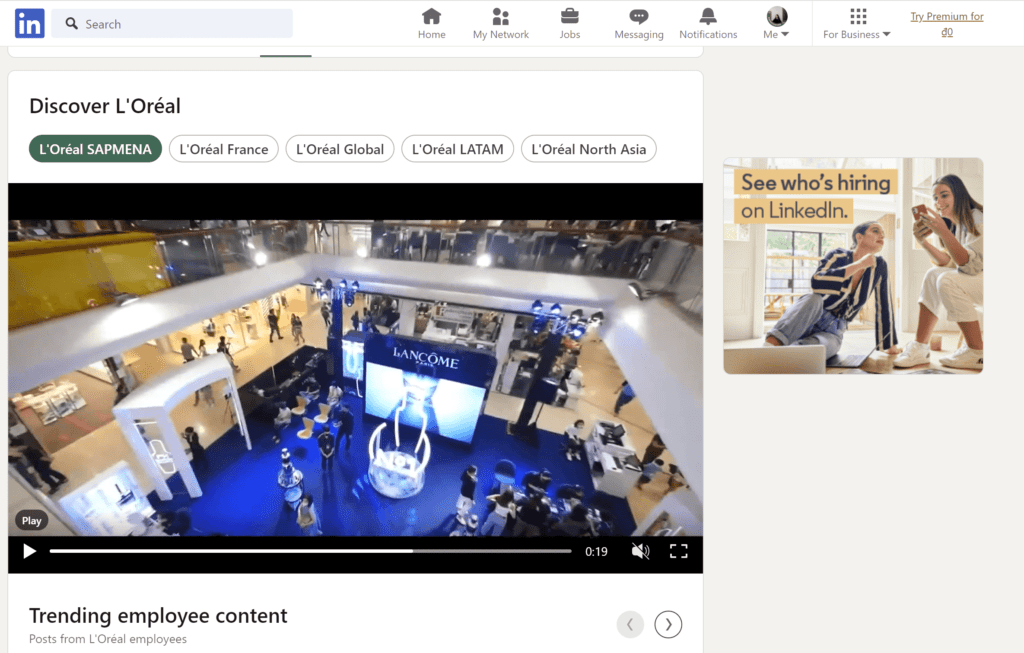
Engaging with Your Current Follower Base
- Foster Engagement: Regularly engage with your existing followers through comments, likes, and shares.
- Respond to comments on your posts to create a sense of community.
- Acknowledge milestones or achievements of your followers to strengthen connections.
- Example: Engaging with your current followers not only fosters a sense of community but also increases the likelihood of your content being shared, thus expanding your reach to potential new followers.
Strategic Networking for Follower Acquisition
- Networking Initiatives: Actively participate in relevant groups, discussions, and industry events.
- Connect with professionals who share common interests or are influential in your field.
- Leverage mutual connections for introductions, widening your networking circle.
- Example: Engaging in industry-specific discussions and networking events can expose your profile to professionals interested in your field, potentially leading to an influx of relevant followers.
Optimizing LinkedIn Recommendations
- Recommendation Impact: Encourage colleagues, clients, or business partners to provide LinkedIn recommendations.
- Positive recommendations enhance your professional credibility and may attract new followers.
- Optimize your profile to showcase your skills and accomplishments, increasing your appeal to potential followers.
- Example: Utilizing recommendations strategically can contribute to follower growth.
Follower Growth and Thought Leadership
- Thought Leadership Content: Position yourself as a thought leader by sharing insightful and original content.
- Create articles, whitepapers, or thought-provoking posts that showcase your expertise.
- Engage in discussions around industry trends to establish credibility and attract a following.
- Example: Thought leaders often garner significant follower attention. By consistently sharing valuable insights, you position yourself as a go-to source within your industry, attracting followers seeking expertise.
Tracking Competitor Follower Growth
- Competitor Benchmarking: Compare your follower growth with industry competitors.
- Analyze the strategies they employ to attract and retain followers.
- Identify gaps in your approach and adapt strategies based on successful competitor tactics.
- Example: If a competitor experiences a surge in follower growth after launching a targeted campaign, it signals an opportunity for you to explore similar tactics within your niche.
Consistency and Patience in Follower Growth
- Consistent Efforts: Understand that follower growth is a gradual process that requires consistent effort.
- Patience is key – avoid expecting immediate results, especially from long-term strategies.
- Continue refining and adapting your approach based on ongoing analytics and insights.
- Example: LinkedIn growth is a marathon, not a sprint. Consistency in content creation, engagement, and networking efforts over time often leads to sustained follower growth.
Utilizing Sponsored Content for Visibility
- Sponsored Content Strategies: Consider leveraging LinkedIn’s sponsored content features to increase visibility.
- Target specific demographics to reach potential followers with tailored content.
- Monitor the performance of sponsored content through analytics to refine future campaigns.
- Example: Sponsored content can significantly amplify your reach.
5. Content Performance Evaluation
In the ever-evolving landscape of professional networking, evaluating the performance of your content on LinkedIn is paramount.
This extensive exploration delves into the nuances of Content Performance Evaluation, guiding you through the metrics that define the impact of your posts and providing actionable insights to refine your storytelling strategy.

Assessing Key Metrics for Content Performance
- Engagement Metrics Overview: A holistic view of your content’s effectiveness involves analyzing key engagement metrics.
- Likes, Comments, Shares: Gauge the interaction and resonance of your content.
- Click-Through Rates (CTR): Evaluate the effectiveness of embedded links in driving user actions.
Identifying Top-Performing Content
- Engagement Heatmaps: Pinpoint posts with the highest engagement metrics to identify patterns.
- Analyze the elements that contribute to the success of top-performing content.
- Understand the preferences of your audience by recognizing recurring themes or formats.
- Example: If a series of posts featuring industry insights consistently garners high engagement, it signals a preference for informative content within your audience.
Analyzing Post Timing and Frequency
- Optimal Posting Times: Assess when your audience is most active on LinkedIn for optimal post-scheduling.
- Experiment with different posting times to identify peak engagement periods.
- Analyze the impact of post frequency on overall engagement levels.
Content Type and Format Analysis
- Diversifying Content Formats: Assess the performance of different content types, such as text posts, images, videos, and articles.
- Identify the formats that resonate most with your audience.
- Experiment with multimedia content to maintain variety in your feed.
Tracking the Impact of Hashtags and Keywords
- Strategic Hashtag Usage: Evaluate the influence of hashtags on content visibility and engagement.
- Incorporate industry-specific hashtags to increase discoverability.
- Analyze the performance of keywords in the text of your posts.
Leveraging LinkedIn Analytics for Insights
- LinkedIn Analytics Dashboard: Utilize the platform’s analytics tools for a comprehensive understanding of your content’s impact.
- Identify trends and patterns by delving into demographic and engagement insights.
- Leverage data-driven insights to refine your content strategy.
- Example: LinkedIn Analytics provides detailed information on follower demographics, enabling you to tailor your content to specific audience segments for increased engagement.
Refining Content Based on Audience Feedback
- Community Engagement: Actively engage with comments and direct messages to gather audience feedback.
- Use feedback to understand what resonates with your audience and adapt your content accordingly.
- Foster a sense of community by acknowledging and responding to audience contributions.
- Example: If your audience expresses a preference for in-depth tutorials through comments, incorporating more detailed instructional content into your strategy can enhance engagement.
A/B Testing Strategies for Optimization
- Experimental Approaches: Implement A/B testing with variations in content types, formats, and posting times.
- Analyze the performance of variations to identify optimal combinations.
- Use A/B testing as an iterative process for continuous content optimization.
- Example: A/B testing can involve comparing the engagement levels of two versions of a post with different visuals or headlines. This iterative approach allows you to fine-tune your content strategy based on audience response.
Content Performance Across Different Audience Segments
- Demographic Breakdown: Analyze how content performs among different demographic segments of your audience.
- Tailor content to resonate with specific industries, job roles, or locations.
- Identify niche content opportunities for underrepresented segments.
- Example: If your audience includes a significant number of professionals in the technology sector, crafting content that addresses industry-specific challenges or innovations can enhance engagement within this segment.
Benchmarking Against Industry Standards
- Industry Comparison: Compare your content performance against industry benchmarks.
- Utilize data from industry reports to identify areas for improvement.
- Benchmarking helps you stay competitive and adapt to evolving industry trends.
- Example: If industry reports indicate a growing interest in a particular topic, aligning your content with that trend can position you at the forefront of relevant conversations, potentially boosting engagement.
Content Personalization and Storytelling
- Personalized Content: Assess the impact of personalized content that speaks directly to your audience.
- Incorporate personal anecdotes, experiences, or case studies into your content strategy.
- Storytelling adds a human touch, fostering a deeper connection with your audience.
- Example: Personalized content, such as sharing your professional journey or lessons learned, can resonate strongly with your audience, humanizing your brand and enhancing engagement.

6. Network Influence
In the intricate realm of professional networking on LinkedIn, understanding and harnessing the influence of your network is a pivotal element for success.
This extensive exploration delves into the nuances of Network Influence, guiding you through strategies to identify key players, foster meaningful connections, and leverage your network for professional growth.

Identifying Key Players within Your Network
- Engagement Tracking: Monitor engagement metrics to identify individuals consistently interacting with your content.
- Recognize followers who frequently like, comment, or share your posts.
- Analyze connections with a significant following or influence in their respective industries.
- Example: If a specific connection regularly engages with your content and possesses a substantial following, fostering a closer connection with them can potentially amplify the reach of your posts within their network.
Leveraging LinkedIn’s “Top Followers” Feature
- Top Followers Analytics: Utilize LinkedIn’s “Top Followers” feature to identify and acknowledge your most engaged connections.
- Recognize connections who actively contribute to your content’s visibility.
- Engage with and appreciate these top followers to strengthen your relationship.
- Example: Expressing gratitude to top followers can foster a sense of community and encourage ongoing engagement.
Analyzing Connection Quality Over Quantity
- Strategic Connections: Prioritize quality connections over sheer quantity.
- Assess the relevance of connections to your professional goals and industry.
- Cultivate relationships with individuals who align with your values and contribute to meaningful discussions.
Recognizing Industry Influencers and Thought Leaders
- Industry Benchmarking: Identify influencers and thought leaders within your industry.
- Follow and engage with individuals who share valuable insights and trends.
- Leverage the network of influencers to broaden your industry knowledge and connections.
- Example: If you’re in the marketing sector, following and engaging with leading marketing influencers not only keeps you abreast of industry trends but also positions you as an active participant in relevant conversations.
Engagement Patterns and Network Mapping
- Engagement Analysis: Study engagement patterns within your network to identify individuals sparking meaningful discussions.
- Map out connections with high engagement levels and analyze their influence.
- Understand the structure of your network, identifying clusters of influential connections.
- Example: Network mapping can reveal clusters of connections from specific industries or geographic locations. This insight allows you to tailor content and engagement strategies to resonate with these clusters.
Networking in LinkedIn Groups and Communities
- Group Participation: Actively engage in LinkedIn groups and communities related to your industry.
- Identify key contributors and thought leaders within these groups.
- Foster connections with influential members to expand your network reach.
- Example: In groups focused on artificial intelligence, connecting with experts who contribute valuable insights can enhance your knowledge base and potentially lead to collaboration opportunities.
Building Relationships Through Personalized Connection Requests
- Personalized Invitations: Customize connection requests to convey genuine interest.
- Include a brief message expressing why you’d like to connect.
- Building connections on a foundation of shared interests or goals can lead to more meaningful and influential relationships.
- Example: Craft messages that showcase your genuine interest in connecting for mutual professional benefit.
Monitoring and Engaging with Network Updates
- Network Updates Feed: Regularly check your network updates feed to stay informed about your connections’ activities.
- Engage with your network’s posts by liking, commenting, or sharing relevant content.
- Demonstrating active engagement within your network reinforces your presence and influence.
- Example: Engaging with your network’s updates not only strengthens connections but also positions you as a valuable participant in your professional community.

Influence through Endorsements and Recommendations
- Strategic Endorsements: Endorse skills of connections where applicable to reciprocate and strengthen relationships.
- Request and provide recommendations to showcase your expertise and reliability.
- Endorsements and recommendations contribute to building credibility within your network.
Strategic Networking for Opportunities and Collaborations
- Strategic Networking Initiatives: Leverage your influential connections for potential collaborations and opportunities.
- Identify areas of mutual interest or projects where collaboration can be mutually beneficial.
- Actively participate in industry events and conferences to expand your network reach.
- Example: Strategic networking can lead to collaborative projects, partnerships, or job opportunities. At least 80% of all jobs are filled through a professional network connection.
Benchmarking Your Network Influence
- Comparative Analysis: Compare your network influence against industry benchmarks and competitors.
- Utilize analytics to assess your network’s reach and engagement metrics.
- Identify areas for improvement and adapt strategies based on successful industry practices.
- Example: Benchmarking allows you to understand where you stand in comparison to industry standards. If your network influence surpasses benchmarks, you can leverage this strength for enhanced professional opportunities.
Consistency in Network Engagement
- Consistent Interactions: Maintain regular interactions with your network to stay top-of-mind.
- Share relevant content, updates, and insights consistently.
- Consistency in engagement fosters a vibrant and active network.
- Example: Regularly sharing industry insights, achievements, or valuable content reinforces your presence within your network.
7. Benchmarking Against Competitors
In the competitive landscape of professional networking, benchmarking against competitors is a strategic imperative to gauge your performance, identify areas for improvement, and stay ahead in the digital professional realm.
This comprehensive exploration delves into the nuances of benchmarking on LinkedIn, guiding you through the key metrics, tools, and strategies to gain a competitive edge in the ever-evolving business landscape.

Understanding the Landscape: Why Benchmarking Matters
- Competitive Intelligence: Benchmarking allows you to gather insights into the strategies and performance of your competitors.
- Understand how your LinkedIn presence compares to industry benchmarks.
- Identify opportunities and gaps in your approach by analyzing competitors’ successes and challenges.
- Example: Analyzing competitor strategies helps you adapt and refine your own approach for sustained growth.
Identifying Key Competitors on LinkedIn
- Competitor Selection: Choose competitors based on relevance to your industry, target audience, and business goals.
- Focus on both direct competitors and aspirational companies with a strong LinkedIn presence.
- Identify competitors with a significant follower base, high engagement, and thought leadership.
- Example: If you’re in the technology sector, tracking both direct competitors and industry leaders can provide a holistic view of trends, audience preferences, and effective content strategies.
Analyzing Follower Metrics: Quantity and Quality
- Follower Count: Compare your follower count against competitors to assess your relative reach.
- Evaluate the growth rate of your follower base and identify patterns.
- Understand the factors contributing to competitors’ follower growth.
- Example: If your direct competitors have a higher follower count, it may indicate successful audience engagement strategies or a broader industry influence. Analyzing these metrics helps in setting realistic growth goals.
Engagement Metrics: Assessing Interaction Levels
- Likes, Comments, and Shares: Examine engagement metrics to understand how your content resonates.
- Analyze the engagement rates of your posts compared to competitors.
- Identify the types of content and strategies driving higher engagement in your industry.
- Example: If a competitor consistently receives high engagement on video content, it signals an opportunity for you to experiment with video to boost interaction levels.
Content Strategy Benchmarking: Types and Frequency
- Content Types: Analyze the types of content your competitors are leveraging on LinkedIn.
- Identify if they focus on articles, videos, images, or a mix of formats.
- Assess the frequency of their content sharing to understand their publishing strategy.
- Example: A competitor in the marketing sector might prioritize article sharing for in-depth insights, while another in a more visual industry may lean toward image and video content.
Examining LinkedIn Page Optimization
- Profile Completeness: Evaluate the completeness of your LinkedIn Company Page compared to competitors.
- Analyze the effectiveness of visual elements, company description, and featured content.
- Ensure that your page showcases your brand identity and values effectively.
- Example: Pages with complete information get 30% more views. Ensuring your page is optimized enhances its visibility and impact.
Benchmarking Sponsored Content Strategies
- Sponsored Content Metrics: Assess the effectiveness of sponsored content campaigns.
- Analyze the engagement, click-through rates, and conversion rates of sponsored posts.
- Identify the target demographics and industries your competitors are focusing on.
- Example: If a competitor experiences significant success with sponsored content targeting a specific industry, it may indicate an opportunity for you to explore similar targeted campaigns.
Identifying Influencers and Thought Leaders in Your Industry
- Influencer Connections: Analyze the influential connections and thought leaders your competitors engage with.
- Identify industry events, groups, or discussions where influencers are active.
- Leverage connections with industry influencers to enhance your network reach.
- Example: If competitors are consistently engaging with and building relationships with key industry influencers, it underscores the importance of influencer relationships in your industry.
Leveraging LinkedIn Analytics for Comparative Analysis
- LinkedIn Analytics Comparison: Utilize LinkedIn Analytics tools to compare your metrics directly with competitors.
- Identify areas where you outperform competitors and areas needing improvement.
- Leverage analytics data for data-driven decision-making in your LinkedIn strategy.
- Example: LinkedIn Analytics provides a comprehensive view of follower demographics, engagement, and content performance, facilitating a direct comparison with competitors’ analytics data.
Competitor Brand Perception Analysis
- Brand Perception Metrics: Gauge how your brand is perceived compared to competitors.
- Analyze comments, reviews, and sentiments expressed by followers.
- Understand the factors that contribute to positive or negative perceptions within your industry.
- Example: If competitors receive positive comments about their customer service, it may indicate an opportunity for you to emphasize customer satisfaction in your content and engagement strategy.

Assessing Employee Advocacy and Engagement
- Employee Engagement Metrics: Evaluate how employees engage with and advocate for your company on LinkedIn.
- Compare the level of employee engagement with that of competitors.
- Identify potential gaps in employee advocacy that may impact brand visibility.
- Example: Content that is shared by employees receives eight times more engagement than content shared by brand channels. Monitoring employee engagement can provide insights into the effectiveness of internal advocacy programs.
Iterative Improvement Through Competitor Analysis
- Iterative Benchmarking: Treat competitor analysis as an ongoing, iterative process.
- Regularly revisit benchmarks to adapt to industry shifts and emerging trends.
- Implement strategies based on continuous analysis for sustained improvement.
- Example: The digital landscape is dynamic, and regular benchmarking allows you to adapt your LinkedIn strategy to evolving industry trends and changing competitor landscapes.
8. Utilizing LinkedIn Analytics Tools
LinkedIn Analytics Tools provide a treasure trove of data and insights to propel your professional presence forward.
This in-depth exploration will guide you through the functionalities and strategies of utilizing LinkedIn Analytics, empowering you to make informed decisions, refine your content strategy, and optimize your networking efforts.
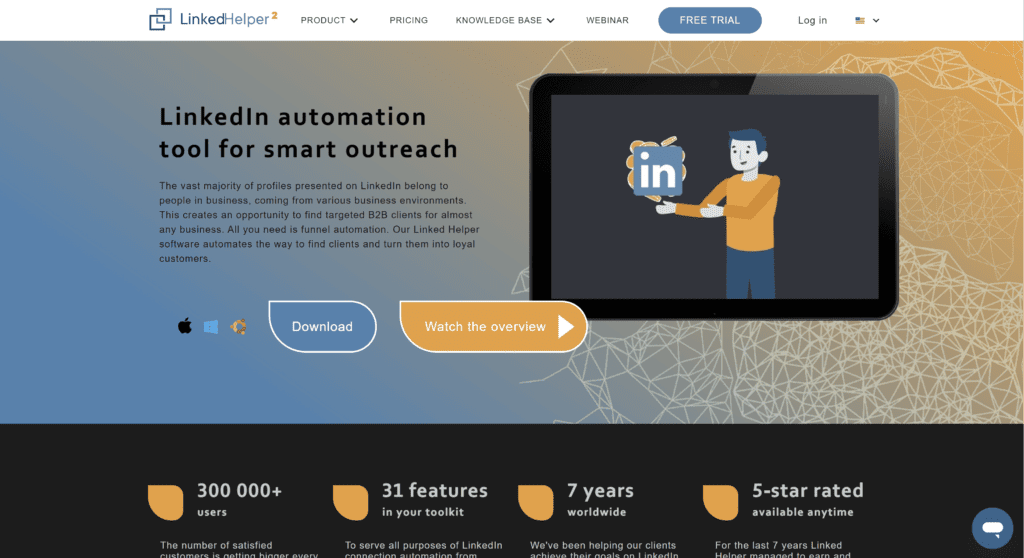
Unlocking the Power of LinkedIn Analytics
- Overview of LinkedIn Analytics: LinkedIn offers a suite of analytics tools designed to provide comprehensive insights into your profile, content performance, and audience engagement.
- Access analytics by clicking on the ‘Me’ icon, selecting ‘View Profile,’ and then clicking on ‘Analytics.’
- Three main sections: Profile Views, Post Views, and Followers.
- Example: Regularly monitoring these analytics can significantly impact your visibility on the platform.
Profile Views: Understanding Your Audience Reach
- Profile Views Metric: Analyze the number of profile views to understand the reach and visibility of your LinkedIn profile.
- Track changes in profile views over time to identify patterns and correlations.
- Leverage this metric to assess the effectiveness of profile optimizations and content strategies.
- Example: A sudden increase in profile views after updating your headline or adding a new skill indicates the impact of these optimizations on audience interest.
Post Views: Evaluating Content Performance
- Post Views Analysis: Dive into the ‘Post Views’ section to assess the performance of your individual posts.
- Identify which posts are garnering the highest views and engagement.
- Use this data to refine your content strategy by focusing on content types and topics that resonate with your audience.
- Example: A post featuring industry insights receives significantly more views than other content types, suggesting a preference for informative posts within your audience.
Followers Insights: Demographic and Geographic Analysis
- Follower Demographics: Explore the ‘Followers’ section to gain insights into the demographics of your audience.
- Analyze follower demographics based on industry, job function, and location.
- Use this data to tailor your content to the preferences and characteristics of your audience segments.
- Example: Discovering a significant follower base in a specific industry prompts the creation of industry-specific content to cater to that audience segment.
Understanding Follower Growth: Trends and Patterns
- Follower Growth Analysis: Track changes in your follower count over time to identify trends and patterns.
- Analyze the impact of specific content, engagement strategies, or networking initiatives on follower acquisition.
- Leverage this data to refine and optimize your follower growth strategies.
- Example: If follower growth spikes after hosting a LinkedIn Live session or publishing a particularly engaging article, it signifies the effectiveness of these strategies.
Engagement Metrics: Evaluating Post Performance
- Post Engagement Analysis: Delve into the engagement metrics of your individual posts, including likes, comments, and shares.
- Identify posts with high engagement rates and analyze the elements contributing to their success.
- Leverage insights to refine your content strategy for maximum impact.
- Example: Posts with a personal touch or relatable anecdotes consistently receive higher engagement, indicating the importance of authenticity in content creation.
LinkedIn Company Page Analytics: Maximizing Brand Visibility
- Company Page Analytics: For businesses, explore analytics specific to your LinkedIn Company Page.
- Assess follower demographics, post engagement, and overall page performance.
- Utilize these insights to optimize your Company Page strategy and enhance brand visibility.
- Example: Optimizing your Company Page based on analytics can significantly impact brand visibility.
Analyzing Traffic from LinkedIn to Your Website
- Traffic Analytics: If you have added your website to your LinkedIn profile, use the ‘How You’re Appearing on LinkedIn’ section to analyze traffic to your website.
- Evaluate the effectiveness of your LinkedIn presence in driving website visits.
- Optimize your content strategy to further encourage clicks to your website.
- Example: If a specific type of content consistently leads to website clicks, prioritize creating similar content to enhance your website traffic.
Leveraging Data for Personalized Content Strategies
- Data-Driven Content Optimization: Use analytics insights to tailor your content strategy for maximum impact.
- Identify content types, posting times, and topics that resonate with your audience.
- Implement A/B testing based on analytics data to refine and optimize your content.
- Example: Analytics reveal that posts shared on weekdays receive higher engagement. Adapting your posting schedule aligns with audience activity times, maximizing engagement.
Monitoring Competitor Performance through Analytics
- Competitor Benchmarking: Use LinkedIn Analytics to compare your metrics with competitors.
- Analyze their follower growth, engagement rates, and content strategies.
- Benchmarking against competitors provides valuable insights to adapt and refine your approach.
- Example: If a competitor experiences a surge in follower growth after implementing a specific content strategy, it indicates an opportunity to explore a similar approach.
Optimizing Sponsored Content Campaigns
- Sponsored Content Analytics: If you run sponsored content campaigns, utilize analytics to evaluate their performance.
- Assess metrics such as click-through rates, impressions, and engagement.
- Optimize targeting based on analytics data to enhance the effectiveness of sponsored content.
- Example: Sponsored content campaigns targeting specific industries or job roles may result in higher engagement, guiding future campaign targeting strategies.
Iterative Refinement: Using Insights for Continuous Improvement
- Continuous Monitoring: Treat LinkedIn Analytics as an iterative process for continuous improvement.
- Regularly monitor and analyze metrics to identify emerging trends and shifts in audience behavior.
- Adapt your strategies based on ongoing analytics for sustained success.
- Example: As industry trends evolve, regularly refining your content strategy based on analytics ensures your approach remains aligned with audience preferences.
Conclusion
In the expansive world of professional networking, the ability to interpret and harness the data of your LinkedIn followers is akin to possessing a compass that guides you through the dynamic terrain of digital connectivity.
As we conclude our exploration into the intricacies of LinkedIn Follower Data interpretation, it’s evident that the strategic utilization of analytics provides professionals with a powerful tool to enhance their presence, engage their audience, and drive meaningful connections.
Reflecting on the Journey: Insights Explored
Throughout this comprehensive journey, we’ve dissected the multifaceted components of LinkedIn Follower Data, unwrapping the layers of Profile Analytics, Demographic Insights, Engagement Metrics, Follower Growth Analysis, and Content Performance Evaluation.
From understanding the demographics of your audience to deciphering the impact of content strategies, each facet has been a stepping stone toward a holistic comprehension of your LinkedIn influence.
Empowering Strategies for Professional Growth
Armed with the knowledge garnered from follower data interpretation, professionals can now embark on a journey of strategic empowerment.
The ability to decipher engagement patterns, identify content preferences, and navigate the nuanced landscape of follower growth positions individuals to refine their approach systematically.
Whether you’re seeking to boost brand visibility, nurture a vibrant professional network, or position yourself as a thought leader, the insights derived from LinkedIn Follower Data pave the way for informed decision-making.
Strategic Content Creation: Beyond Quantity to Quality
Interpreting follower data underscores the significance of tailoring content strategies to align with audience preferences. It’s not just about the frequency of posting but the quality and relevance of the content shared.
From understanding the impact of multimedia elements to leveraging storytelling techniques, professionals can now craft narratives that resonate deeply with their audience, fostering a more engaged and responsive follower base.
Building a Dynamic and Inclusive Network
Demographic insights have illuminated the importance of recognizing the diversity within your follower base.
The ability to analyze industry, job roles, and geographical locations provides a roadmap for professionals to forge connections that transcend traditional boundaries.
Nurturing a network reflective of diverse backgrounds and experiences not only enhances the richness of discussions but also opens doors to a myriad of collaborative opportunities.
Strategic Networking in the Digital Sphere
Follower Growth Analysis has been unveiled as a dynamic compass for strategic networking.
By identifying growth trends, professionals can adapt their engagement initiatives, leverage content strategies that resonate with a wider audience, and strategically foster connections.
This, coupled with the understanding of competitor growth patterns, positions individuals to stay ahead in the competitive landscape, actively participating in the ongoing dialogue within their industry.
The Power of Data-Driven Decision-Making
Engagement metrics have emerged as a barometer of content resonance. By interpreting likes, comments, and shares, professionals gain a nuanced understanding of their audience’s preferences.
This data-driven approach not only aids in refining existing content strategies but also empowers individuals to experiment with innovative formats, ensuring that their digital footprint remains dynamic and captivating.
Sustained Growth through Iterative Refinement
As we conclude this exploration, it’s essential to emphasize the iterative nature of data interpretation. LinkedIn Follower Data is not static; it’s a dynamic resource that demands consistent monitoring, adaptation, and refinement.
The ability to pivot based on emerging trends, industry shifts, and evolving audience preferences ensures that professionals stay at the forefront of the digital conversation.
A Vision for Future LinkedIn Success
In conclusion, the journey through the interpretation of LinkedIn Follower Data is not merely an exercise in analytics but a strategic voyage toward professional excellence.
Whether you’re a seasoned industry veteran or a budding professional, the insights derived from follower data provide a blueprint for sustained success in the ever-evolving digital professional landscape.
So, armed with the compass of data-driven insights, set sail on your LinkedIn journey, navigating with precision, purpose, and the confidence that comes from understanding the profound intricacies of your digital audience.
May your LinkedIn endeavors be marked by meaningful connections, influential engagements, and a thriving professional narrative. Safe travels.
If you are looking for a top-class digital marketer, then book a free consultation slot here.
If you find this article useful, why not share it with your friends and business partners, and also leave a nice comment below?
We, at the AppLabx Research Team, strive to bring the latest and most meaningful data, guides, and statistics to your doorstep.
To get access to top-quality guides, click over to the AppLabx Blog.
People also ask
How do you analyze followers on LinkedIn?
Analyze your LinkedIn followers by accessing profile analytics. Navigate to the “Me” icon, select “View profile,” and click on “Analytics.” Explore follower demographics, review growth trends, and assess post-engagements. Utilize LinkedIn Company Page analytics for comprehensive insights. Adapt strategies based on data for sustained growth.
How do I read LinkedIn Analytics?
Read LinkedIn Analytics by accessing your profile, clicking “Analytics,” and exploring key sections. Review Follower demographics, track Follower growth, and assess Post engagement. Utilize the dashboard for an overview. Adapt your strategy based on insights for effective professional growth.
What is a good follower growth rate on LinkedIn?
A good follower growth rate on LinkedIn varies, but aim for steady progress. Consistent growth, even at 5-10% monthly, indicates an engaged audience. Focus on quality connections and relevant content to attract a steadily increasing follower base aligned with your professional goals.
